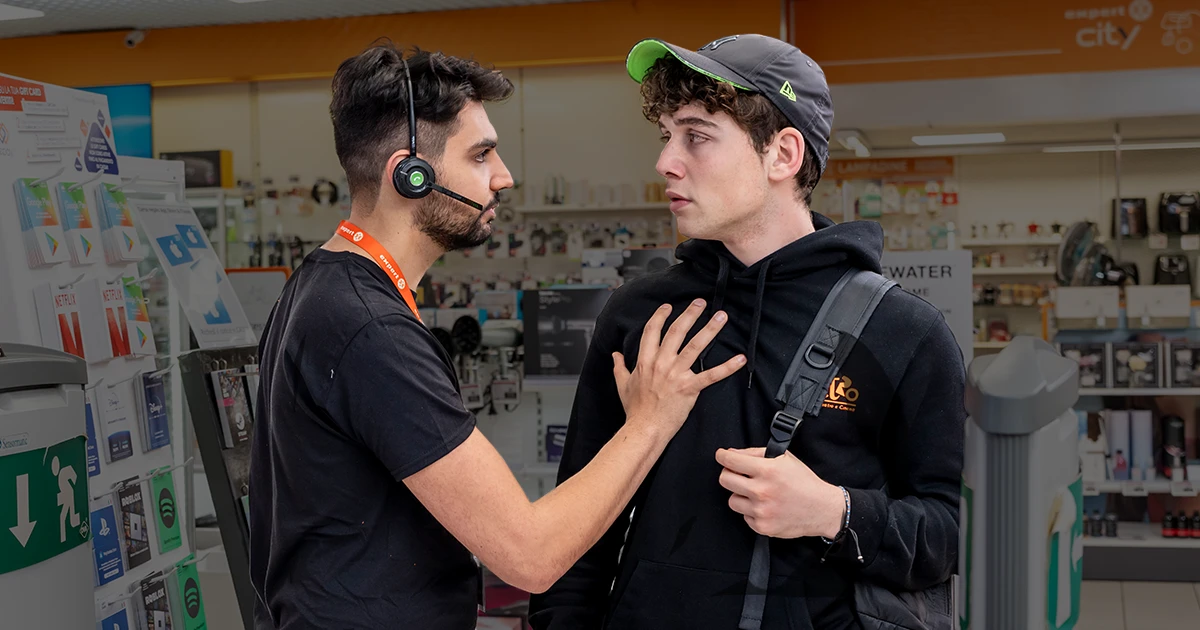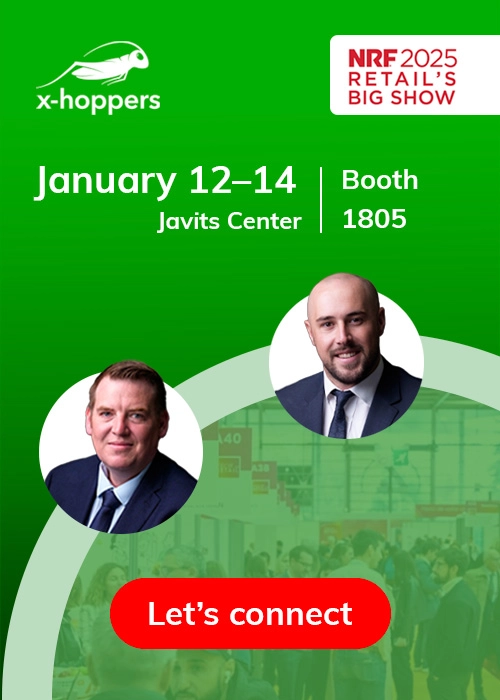
Retail has always struggled with loss. The very nature of the industry invites people to visit and see all the wonderful things they too can own — assuming they are willing to pay. But recently, rising theft, high overheads, a cost of living crisis and increasingly complex operations mean that what was once considered “just a part of doing business” is now a financial threat.
Luckily, while it’s foolhardy to believe you can completely eradicate retail loss, there are practical steps you can take to reduce and prevent it.
What is retail loss prevention?
Also known as shrink or shrinkage, retail loss refers to financial loss due to a number of factors. The top causes of retail loss include:
- External theft
- Internal theft
- Supplier fraud
- And administrative errors
That means that while shoplifting and organized retail crime are often portrayed as the main causes behind shrink, it is not the whole story. Thus, the meaning of loss prevention isn’t just focused on how to make it harder for customers to steal; instead, it includes all proactive measures designed to minimize or eliminate losses.
Additionally, we should be careful not to confuse loss prevention with asset protection.
What is asset protection in retail?
Asset protection is even broader, encompassing not only physical but also digital assets and intellectual property. This includes valuable assets such as customer details, which are increasingly under threat thanks to an increase in cybercrime against retailers.
So while there is overlap between the two terms, when we’re talking about retail security and loss prevention, we’re focused only on financial and physical assets that are both in‑store and within the wider retail ecosystem.
And still, there are a lot of areas to cover.
Practical tips and loss prevention strategies in retail
Even in the smallest stores, there are multiple strategies you can use to protect your inventory, reduce shrinkage and ensure operational efficiency. But before you start thinking about what you need to add to your store, you need first to assess what is already there.
1. Review your layout
In retail, we put a lot of thought into where products are placed to optimize sales, but have you given equal thought to how your product placement and store layout may actually make theft easy?
For example, if you keep high-value products near the door, they’re more susceptible to grab-and-dash tactics. The same can be said for hidden spots, as they’re the perfect place for unscrupulous customers to hide items to smuggle out of the store. Once you’ve uncovered the problem areas, a few simple actions can immediately reduce crimes of opportunity.
Ensure shelves and aisles are clear and organized
Messy shelves and overstuffed aisles make it hard to see everything at a glance. Tidy them up and suddenly, not only can you keep an eye on would-be thieves, but your loyal customers can find what they need faster. You may even discover it’s easier to keep track of your inventory, reducing miscounts and misplaced items.
Use mirrors and surveillance to cover any gaps
Strategically placed mirrors can help give you a clear view of blind spots, or in a smaller space, let you see the whole store from one location. If your store layout is unusually shaped or much larger, make sure you also use video surveillance as both a deterrent and a way to catch thieves in the act.
Move high-value items to a more secure location
This could include putting them behind a counter, closer to checkouts or — dare we say it — under lock and key. Just make sure you balance the risk of theft with the potential impact on your more trustworthy customers.
These changes are quick wins that can reduce opportunistic theft, but their effectiveness relies on something even more vital — alert and prepared store associates.
2. Train and prepare your employees
Let’s face it, your store employees can make or break your retail loss prevention strategies. Whether or not you have dedicated security guards, training your entire store team on the following will help you prevent theft and reduce other errors that can lead to retail loss.
Spotting suspicious shoppers
Training employees on the hallmarks of suspicious behavior, including nervousness, loitering or frequent visits without purchases, can help them know when to approach a shopper or to call for back‑up. Knowing what to look for will help make them active instead of passive members of the wider loss prevention team.
Proper payment processing
A lot can go wrong at checkout. Whether it’s misscanned items, fraudulent payments, tampered with card readers or even distraction-based scams, your associates should know about each one and what they need to do if they catch or suspect foul play. It’s also equally important to remind them that there are repercussions not only if they dip their hands into the cash register but if they improperly reduce items for friends and family. Remember, customers are not responsible for all retail losses.
Inventory management
Whether it’s how to do a stock count, check gaps or even use the stock management system, training your employees on inventory management can help reduce errors and also help you spot high-theft items even when other evidence is lacking.
Return and refund policies
Would you approve a refund without a receipt? Believe it or not we’ve seen it happen first hand. And while it does speed up returns, it’s a system that’s easy to abuse. Establish a clear returns policy and train your entire staff on both the details and why enforcement is important. Otherwise, fraudulent claims will quickly add up.
In short, when your employees are clued into your policies and procedures, they can take ownership, leading to better results overall.
3. Invest in technology and retail loss prevention systems
Still, even the best employees and procedures can’t keep track of everything all the time. To support your efforts, it’s worth investing in technologies that not only improve surveillance but also help you create the store environment your customers want to shop at.
Security cameras
Able to serve as both a deterrent and a second pair of eyes, security cameras are key to collecting solid proof of theft in your store. However, used alone, someone still has to monitor them, which is time-consuming and vulnerable to staffing issues and human error. Luckily with advances in AI, computer vision technology can now automatically identify suspicious gestures and even alert your staff via notifications sent to a retail headset system, like x‑hoppers. With this type of surveillance system in place, your teams can better track and react quickly to potential theft, reducing shrink while making stores safer.
Electronic article surveillance (EAS)
Another approach to reducing loss is to use EAS tags. Attached directly to a product, an EAS tag is easily visible and can be deactivated at checkout. If it isn’t deactivated, it then sets off an alarm as soon as it passes through a gate near the exit. These tags make it easier for loss prevention teams to track items and legitimize checks and searches. And since the tags and gates are immediately noticeable, they are also effective deterrents.
Exception-based reporting (EBR)
EBR systems analyze transaction data to identify anomalies that could signal fraudulent activities, such as unusually high voids or refunds. This automates reviewing transactions, speeding up the detection and investigation of suspected internal theft or related errors.
Self-service loss prevention (SSLP)
Over a third of consumers report witnessing theft at self-checkout machines, and honestly, it shouldn’t be a surprise. Whether due to frustration or opportunism, self-checkouts are a huge focus for loss prevention in retail. SSLP solutions help to combat this by using AI to monitor self-checkout lanes, ensure items are scanned correctly and detect behaviors that may indicate theft.
Wearable in‑store communication solutions
All techniques and technologies are only as good as the team working with them. If your store associates can’t easily and discreetly communicate, how can they coordinate their response to stock issues, let alone theft? That’s why we heavily recommend a wearable communication solution, like the x‑hoppers retail headset system. Not only do voice solutions allow teams to quickly pass on information to internal teams, but advanced systems like x‑hoppers can also integrate with your other technology and systems, allowing associates to receive real-time alerts from self-checkout machines, security cameras or even smart call points. Thus, with one tool, your in‑store teams can respond quickly to suspicious activities but also work seamlessly with your systems to provide a stellar customer experience.
Working together: The power of connected teams
One thing that is certain when it comes to retail loss prevention: things have to change. As we’ve seen, retail loss is a multifaceted challenge that demands, above all, collaboration. While traditional tactics like security cameras and tags are invaluable to solving the problem, it’s when we connect them to informed staff that we can see real progress on all the factors contributing to retail loss.
And one way to encourage collaboration is with a frontline-focused unified communications system, like x‑hoppers.
x‑hoppers: Technology with a human touch
Designed to connected teams to colleagues, store systems and even external contacts, such as the police, x‑hoppers is an AI‑powered retail headset system that combines wireless headsets, smart call points and advanced AI technologies to improve customer satisfaction, security and store operations. It’s a full toolbox of tools designed to help you and your associates jump over any in-store problem.
More than just headsets, x‑hoppers includes:
Real-time monitoring and alerts
x-hoppers sends real-time notifications and automatic transcription through the mobile app, allowing managers to monitor store activities remotely. Even when they are off‑site!
Efficient inventory management
x‑hoppers integrates with any IoT device, including smart shelves and smart fridges, sending alerts whenever there’s an issue. The system even comes with an AI assistant that can be connected to your inventory system, allowing associates to query stock levels from anywhere on the floor, helping them detect issues faster and serve customers better.
Enhance communication between staff
The wireless push-to-talk headsets make it easy for staff to stay in constant contact, improving response times and adding an additional layer of support, especially for lone workers. Staff can also coordinate and distribute task efficiently, helping them not only respond to customer queries and stock issues, but also high-risk situations, such as suspected emergencies or theft.
On-the-job training
With a built in AI assistant and instant access to the broadcast, x‑hoppers provides associates with knowledge-on-demand, speeding up their training time and allowing them to find even detailed procedural information from day one.
In short, x‑hoppers offers a comprehensive solution that can connect your team and give you valuable insights into what’s happening on the shop floor. While just one of the many tools and strategies you can deploy to reduce your shrink, x‑hoppers can help you stay ahead of the curve and create an in‑store experience that both helps you keep an eye on your assets and your customer experience.
Enjoyed this article and want to dive deeper? Find more tips on reducing shrink here or speak to a member of our team to discover how x‑hoppers can help you boost your unique KPIs.



